Managing Hull Trim
Everyone understands that sailboats rotate around the longitudinal axis, or heel. Sailors control the amount of heel rotation using sail-control lines and, especially in small boats, the position of crew weight side-to-side in the cockpit. What few people understand is that small sailboats are also sensitive to the amount of rotation around the transverse axis – known as pitch or hull trim. Think of it as “bow-down”, “neutral”, or “bow-up” attitude relative to horizontal as the boat moves across the horizontal surface of the water. The underwater body of every sailboat is designed for optimum performance at a certain hull trim angle. If you sail the boat in a more bow-up or bow-down attitude than the design parameter, you will sail slower than possible.
Below are some underbody renderings of the Puur 17 when heeled at 15 degrees like when heading upwind; the left image shows the hull in neutral trim, while the image at right carries 1 degree of forward trim (bow-down). Note the cleaner exit at the transom in the image at right. That’s the effect of just 1 degree of hull trim.
These images reflect a 400-lb crew and wind speed below 10 knots. In these conditions, we’ve found the ideal hull trim angles are roughly 1 degree forward trim (bow-down) upwind and neutral trim downwind. Depending upon your crew weight and sailing technique, you will find performance differs greatly at varying hull trim angles.
Below are some starting points for finding your best crew position, but you will need to experiment on your Puur 17 with your crew to find your own hull trim sweet spots upwind and downwind. The numbers below are the midpoint of the crew seating positions, in inches, aft of the shrouds.
Once you find your boat’s sweet spots, send me a note.



